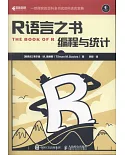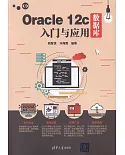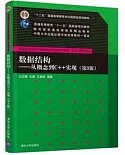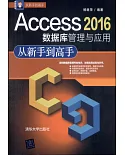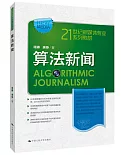本書是全面論述本體知識庫、詞匯庫以及兩者界面建構的第一本專著,內容涵蓋理論和實踐兩個方面的研究成果,對研究語言語義學、計算語言學和通過自然語言處理進行知識挖據以及本體建構的研究人員有重要參考價值。
Chu-Ren Huang,香港理工大學教授,文學院院長。
目錄
導讀 1
Contributors 17
Preface 23
Part I Fundamental aspects 1
1 Ontology and the lexicon: a multidisciplinary perspective 3
1.1 Situating ontologies and lexical resources 3
1.2 The content of ontologies 10
1.3 Theoretical framework for the
ontologies/lexicons interface 14
1.4 From ontologies to the lexicon and back 21
1.5 Outline of chapters 23
2 Formal ontology as interlingua: the SUMO and
WordNet linking project and global WordNet 25
2.1 WordNet 25
2.2 Principles of construction of formal ontologies
and lexicons 29
2.3 Mappings 30
2.4 Interpreting language 32
2.5 Global WordNet 33
2.6 SUMO translation templates 35
3 Interfacing WordNet with DOLCE: towards OntoWordNet 36
3.1 Introduction 36
3.2 WordNet』s preliminary analysis 37
3.3 The DOLCE upper ontology 39
3.4 Mapping WordNet into DOLCE 48
3.5 Conclusion 52
4 Reasoning over natural language text by means of FrameNet and ontologies 53
4.1 Introduction 53
4.2 An introduction to the FrameNet lexicon 54
4.3 Linking FrameNet to ontologies for reasoning 56
4.4 Formalizing FrameNet in OWL DL 57
4.5 Reasoning over FrameNet—annotated text 62
4.6 Linking FrameNet to SUMO 66
4.7 Discussion 69
4.8 Conclusion and outlook 70
5 Synergizing ontologies and the lexicon: a roadmap 72
5.1 Formal mappings between ontologies 72
5.2 Evaluation of ontolex resources 73
5.3 Bridging different lexical models and resources 75
5.4 Technological framework 77
Part II Discovery and representation of conceptual systems 79
6 Experiments of ontology construction with Formal Concept Analysis 81
6.1 Introduction 81
6.2 Basic concepts and related work 82
6.3 Dataset selection and design of experiments 86
6.4 Evaluation and discussion 92
6.5 Conclusion and future work 96
7 Ontology, lexicon, and fact repository as leveraged to interpret events of change 98
7.1 Introduction 98
7.2 A snapshot of OntoSem 100
7.3 Motivation for pursuing deep analysis of events of change 101
7.4 Increase 102
7.5 Content divorced from its rendering 114
7.6 NLP with reasoning and for reasoning 117
7.7 Conclusion 118
8 Hantology: conceptual system discovery based on orthographic convention 122
8.1 Introduction: hanzi and conventionalized conceptualization 122
8.2 General framework 126
8.3 Conceptualization and classification of the radicals system 128
8.4 The ontology of a radical as a semantic symbol 132
8.5 The architecture of Hantology 133
8.6 OWL encoding of Hantology 137
8.7 Summary 139
8.8 Conclusion 142
9 What』s in a schema? 144
9.1 Introduction 144
9.2 An ontology for cognitive linguistics 146
9.3 The c.DnS ontology 148
9.4 Schemata, mental spaces, and constructions 161
9.5 An embodied semiotic metamodel 166
9.6 Applying Semion to FrameNet and related resources 169
9.7 Conclusion 181
Part III Interfacing ontologies and lexical resources 183
10 Interfacing ontologies and lexical resources 185
10.1 Introduction 185
10.2 Classifying experiments in ontologies and lexical resources 185
10.3 Ontologies and their construction 188
10.4 How actual resources fit the classification 190
10.5 Two practical examples 194
10.6 Available tools for the ontology lexical resource interface 196
10.7 Conclusion 200
11 Sinica BOW (Bilingual Ontological WordNet):integration of bilingual WordNet and SUMO 201
11.1 Background and motivation 201
11.2 Resources and structure required in the BOW approach 202
11.3 Interfacing multiple resources: a lexicon—driven approach 204
11.4 Integration of multiple knowledge sources 207
11.5 Updating and future improvements 209
11.6 Conclusion 210
12 Ontology—based semantic lexicons:mapping between terms and object descriptions 212
12.1 Introduction 212
12.2 Why we need semantic lexicons 213
12.3 More semantics than we need 215
12.4 The semantics we need is in ontologies 218
12.5 Conclusion 223
13 Merging global and specialized linguistic ontologies 224
13.1 Introduction 224
13.2 Linguistic ontologies versus formal ontologies 226
13.3 Specialized linguistic ontologies 229
13.4 The plug—in approach 230
13.5 Experiments 236
13.6 Applications and extensions 237
13.7 Conclusion 238
Part IV Learning and using ontological knowledge 239
14 The life cycle of knowledge 241
14.1 Introduction 241
14.2 Using ontolexical knowledge in NLP 242
14.3 Creating ontolexical knowledge with NLP 249
14.4 Conclusion 256
15 The Omega ontology 258
15.1 Introduction 258
15.2 Constituents of Omega 258
15.3 Structure of Omega 260
15.4 Construction of Omega via merging 263
15.5 Omega』s auxiliary knowledge sources 264
15.6 Applications 266
15.7 Omega 5 and the OntoNotes project 267
15.8 Discussion and future work 268
15.9 Conclusion 269
16 Automatic acquisition of lexico—semantic knowledge for question answering 271
16.1 Introduction 271
16.2 Lexico—semantic knowledge for QA 272
16.3 Related work 274
16.4 Extracting semantically similar words 275
16.5 Using automatically acquired role and function words 279
16.6 Using automatically acquired categorized NEs 280
16.7 Evaluation 283
16.8 Conclusion and future work 286
17 Agricultural ontology construction and maintenance in Thai 288
17.1 Introduction 288
17.2 A framework of ontology construction and maintenance 290
17.3 Ontology acquisition from texts 291
17.4 Ontology acquisitions from a dictionary and a thesaurus 301
17.5 Integration into an ontological tree 306
17.6 Conclusion 307
References 309
Index 335
Contributors 17
Preface 23
Part I Fundamental aspects 1
1 Ontology and the lexicon: a multidisciplinary perspective 3
1.1 Situating ontologies and lexical resources 3
1.2 The content of ontologies 10
1.3 Theoretical framework for the
ontologies/lexicons interface 14
1.4 From ontologies to the lexicon and back 21
1.5 Outline of chapters 23
2 Formal ontology as interlingua: the SUMO and
WordNet linking project and global WordNet 25
2.1 WordNet 25
2.2 Principles of construction of formal ontologies
and lexicons 29
2.3 Mappings 30
2.4 Interpreting language 32
2.5 Global WordNet 33
2.6 SUMO translation templates 35
3 Interfacing WordNet with DOLCE: towards OntoWordNet 36
3.1 Introduction 36
3.2 WordNet』s preliminary analysis 37
3.3 The DOLCE upper ontology 39
3.4 Mapping WordNet into DOLCE 48
3.5 Conclusion 52
4 Reasoning over natural language text by means of FrameNet and ontologies 53
4.1 Introduction 53
4.2 An introduction to the FrameNet lexicon 54
4.3 Linking FrameNet to ontologies for reasoning 56
4.4 Formalizing FrameNet in OWL DL 57
4.5 Reasoning over FrameNet—annotated text 62
4.6 Linking FrameNet to SUMO 66
4.7 Discussion 69
4.8 Conclusion and outlook 70
5 Synergizing ontologies and the lexicon: a roadmap 72
5.1 Formal mappings between ontologies 72
5.2 Evaluation of ontolex resources 73
5.3 Bridging different lexical models and resources 75
5.4 Technological framework 77
Part II Discovery and representation of conceptual systems 79
6 Experiments of ontology construction with Formal Concept Analysis 81
6.1 Introduction 81
6.2 Basic concepts and related work 82
6.3 Dataset selection and design of experiments 86
6.4 Evaluation and discussion 92
6.5 Conclusion and future work 96
7 Ontology, lexicon, and fact repository as leveraged to interpret events of change 98
7.1 Introduction 98
7.2 A snapshot of OntoSem 100
7.3 Motivation for pursuing deep analysis of events of change 101
7.4 Increase 102
7.5 Content divorced from its rendering 114
7.6 NLP with reasoning and for reasoning 117
7.7 Conclusion 118
8 Hantology: conceptual system discovery based on orthographic convention 122
8.1 Introduction: hanzi and conventionalized conceptualization 122
8.2 General framework 126
8.3 Conceptualization and classification of the radicals system 128
8.4 The ontology of a radical as a semantic symbol 132
8.5 The architecture of Hantology 133
8.6 OWL encoding of Hantology 137
8.7 Summary 139
8.8 Conclusion 142
9 What』s in a schema? 144
9.1 Introduction 144
9.2 An ontology for cognitive linguistics 146
9.3 The c.DnS ontology 148
9.4 Schemata, mental spaces, and constructions 161
9.5 An embodied semiotic metamodel 166
9.6 Applying Semion to FrameNet and related resources 169
9.7 Conclusion 181
Part III Interfacing ontologies and lexical resources 183
10 Interfacing ontologies and lexical resources 185
10.1 Introduction 185
10.2 Classifying experiments in ontologies and lexical resources 185
10.3 Ontologies and their construction 188
10.4 How actual resources fit the classification 190
10.5 Two practical examples 194
10.6 Available tools for the ontology lexical resource interface 196
10.7 Conclusion 200
11 Sinica BOW (Bilingual Ontological WordNet):integration of bilingual WordNet and SUMO 201
11.1 Background and motivation 201
11.2 Resources and structure required in the BOW approach 202
11.3 Interfacing multiple resources: a lexicon—driven approach 204
11.4 Integration of multiple knowledge sources 207
11.5 Updating and future improvements 209
11.6 Conclusion 210
12 Ontology—based semantic lexicons:mapping between terms and object descriptions 212
12.1 Introduction 212
12.2 Why we need semantic lexicons 213
12.3 More semantics than we need 215
12.4 The semantics we need is in ontologies 218
12.5 Conclusion 223
13 Merging global and specialized linguistic ontologies 224
13.1 Introduction 224
13.2 Linguistic ontologies versus formal ontologies 226
13.3 Specialized linguistic ontologies 229
13.4 The plug—in approach 230
13.5 Experiments 236
13.6 Applications and extensions 237
13.7 Conclusion 238
Part IV Learning and using ontological knowledge 239
14 The life cycle of knowledge 241
14.1 Introduction 241
14.2 Using ontolexical knowledge in NLP 242
14.3 Creating ontolexical knowledge with NLP 249
14.4 Conclusion 256
15 The Omega ontology 258
15.1 Introduction 258
15.2 Constituents of Omega 258
15.3 Structure of Omega 260
15.4 Construction of Omega via merging 263
15.5 Omega』s auxiliary knowledge sources 264
15.6 Applications 266
15.7 Omega 5 and the OntoNotes project 267
15.8 Discussion and future work 268
15.9 Conclusion 269
16 Automatic acquisition of lexico—semantic knowledge for question answering 271
16.1 Introduction 271
16.2 Lexico—semantic knowledge for QA 272
16.3 Related work 274
16.4 Extracting semantically similar words 275
16.5 Using automatically acquired role and function words 279
16.6 Using automatically acquired categorized NEs 280
16.7 Evaluation 283
16.8 Conclusion and future work 286
17 Agricultural ontology construction and maintenance in Thai 288
17.1 Introduction 288
17.2 A framework of ontology construction and maintenance 290
17.3 Ontology acquisition from texts 291
17.4 Ontology acquisitions from a dictionary and a thesaurus 301
17.5 Integration into an ontological tree 306
17.6 Conclusion 307
References 309
Index 335
網路書店
類別
折扣
價格
-
新書87折$318







